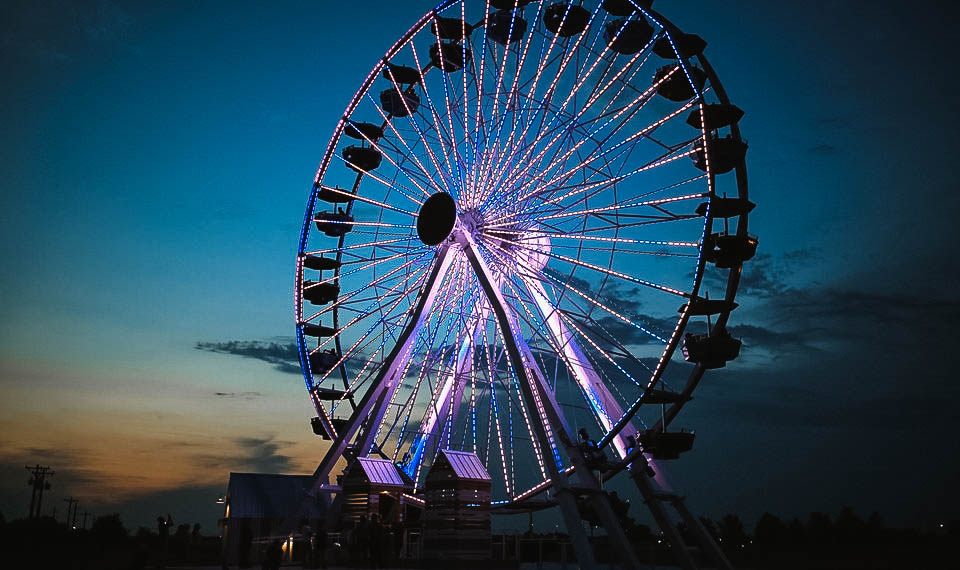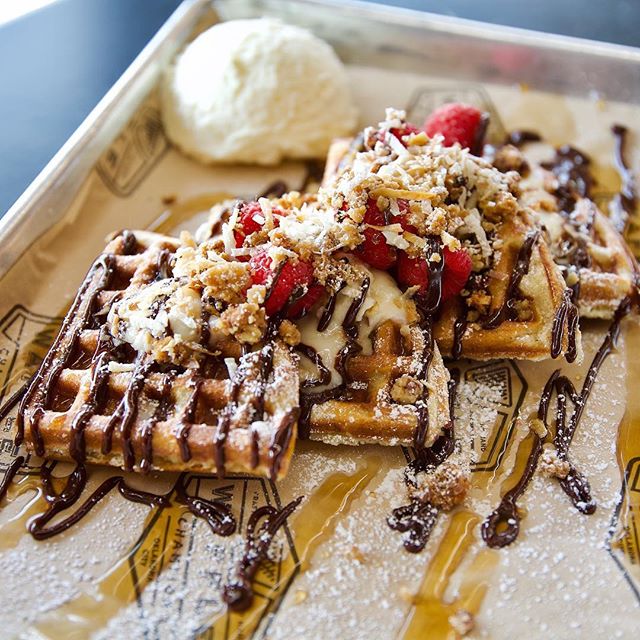Oklahoma City
Oklahoma City was born in a single day when the Great Land Run allowed thousands of people to compete and stake unclaimed land for free on April 22nd, 1889. The city which began with a single railroad station grew overnight to a tent city of 10,000 residents and within three years became the capital of the state of Oklahoma. Since then, Oklahoma City has obviously become more modernized and reinvented itself to become a fascinating place to visit, but even with this modern metamorphosis it has managed to keep its cowboy heritage and customs alive which is part of the city’s appeal.
Oklahoma’s capital city has a growing entertainment district with enough attractions and family friendly theme parks to warrant a visit of a few days. You can watch cowboy history come alive at the National Cowboy & Western Heritage Museum, catch barrel racers, ropers and bronco riders in the ‘Horse Show Capital of the World’, or admire traditional contemporary Native American culture at the Red Earth Indian Center.
If you’re looking for off the beaten path adventure, there are many nearby destinations you can day trip to using Oklahoma City as a jumping off point such as Chickasaw National Recreation Area or Gloss Mountain State Park.
Top Attractions
What you can’t miss in Oklahoma City
Visiting Oklahoma City
Oklahoma City is surprisingly small for a city which makes it great for getting around without a vehicle! You can easily visit most of the city’s downtown attractions and highlights just by walking. But if you must drive, traffic here is minimal so it is a very stress free with lots of parking available.
The two main areas of downtown Oklahoma City that should be at the top of your list of places to visit is the Bricktown District and the Business District.
Bricktown District
Bricktown is a district in downtown Oklahoma City which was once a bustling warehouse area where four railroad companies had freight operations in the late 19th and 20th centuries. A walk around the Bricktown district will allow you to observe some of the early architecture from this period. The first brick buildings built between 1898 and 1903 were typically only one or two stories high. Larger brick buildings were constructed later on between 1911 and 1930.
A decline of the area began with the Great Depression and continued as residents later moved out to the suburbs and then freight traffic moved to highways. By 1980 it was just an area with abandoned buildings.
The lack of infrastructure in the inner city led to the inability to attract new business, residents and visitors. When Oklahoma City lost out to Indianapolis in 1992 for a contract to house a maintenance facility for United Airlines, the city began to grow concerned about their city’s civil decline. This prompted the mayor at the time and the Greater Oklahoma City Chamber of Commerce to propose a development project to revitalize the area in order to improve the city’s economy and make it more attractive as a tourist destination. This led to the construction of the Bricktown Ballpark which opened in 1998 and the Bricktown canal which opened in 1999.
Bricktown is now the highlight of Oklahoma City and the best area for entertainment and dining with dozens of restaurants and attractions.
Where To Stay In Oklahoma City
Fortunately, Oklahoma City is one of the most affordable cities to visit which means there are plenty of nice hotels that are very reasonably priced for you to stay at. If you want to stay close to the cities top attractions you’ll want to stay in the Bricktown district or the Downtown Business District. Staying in these areas means you can easily walk to places like the Bricktown entertainment area, the Myriad Botanical Garden, or the Chesapeake Energy arena if you’re here for a concert or sporting event.
Popular Hotels By Neighborhood
Getting To Oklahoma City
Getting To Oklahoma City By Air – The main airport in Oklahoma City is Will Rogers Airport which is located 10 miles southwest of downtown Oklahoma City. The trip between the airport and the downtown area is approximately 15 minutes.
It is important to know there is no public transport from the airport however taxis and uber/lyft are available. In addition there are private vans available which you can book once you arrive. Also, a number of hotels close to the airport run free 24 hour shuttle buses.
Getting To Oklahoma City By Train – Amtrak has a daily service to Oklahoma City from Fort Worth, Texas called the Heartland Flyer. The trip takes four hours arriving at the historic Santa Fe Depot in Oklahoma City in the evenings.
All of the Heartland Flyer’s coaches feature an upper level coach section with spacious reclining seats, individual reading lights and large windows. The train also has a full-service cafe car featuring snacks, sandwiches, soft drinks, cocktails, and sofa style seating where guests can watch the scenery go by.
Getting Around Oklahoma City
Metro Buses – EMBARK is the metro bus service company and operates 7 days a week. Popular route schedules run every 30 minutes during weekdays and every 60 minutes on Saturdays. Fares are between $1 – $3 depending on whether it is a local or express service or for $4 you can get a 24 hour pass.
There is a downtown service called the Downtown Discovery that provides a free transit service around downtown and Bricktown. See metro bus schedules and routes here.
Streetcars – The Streetcar connects Oklahoma City’s central core area by providing routes between Bricktown, Midtown and Automobile Alley. There are seven cars running on two loops with varying schedules that run six days a week. It costs $1 for a single trip or you can purchase an all-day pass for just $3.
This is one of the most easiest and convenient ways to get around the city. You can visit many of the city’s highlights using this service such as Scissortail Park, Myriad Botanical Gardens, Chesapeake Arena, Oklahoma City Museum of Art, along with popular restaurants and hotels including Vast, Mickey Mantle’s Steakhouse, Pinkitzel, The Skirvin Hilton Hotel and the Colcord Hotel. See Streetcar routes and schedule here.
Weather In Oklahoma City
Oklahoma City’s climate is categorized as ‘humid subtropical’. Summers are hot and humid while winters can get quite chilly. Precipitation does vary throughout the year but most significant rainfall happens in the spring and then again in autumn with winter being the driest month. On average, Oklahoma City has more than 300 days of sunshine per year.
Oklahoma City is one of the most tornado prone places in the world and sits in the center of what is known as Tornado Alley. Tornadoes or severe thunderstorms are most likely to happen here between March and June although they have occurred in every month of the year according to climate statistics. There have been around 150 tornadoes in Oklahoma City since 1890.












